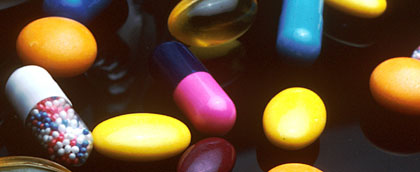A gene that acts as a regulatory pacemaker in pain-perceiving  nerve cells can also cause chronic, neuropathic pain, according to scientists at Cambridge University.
nerve cells can also cause chronic, neuropathic pain, according to scientists at Cambridge University.
Up to a quarter of people with diabetes, half of all patients who have undergone amputations or major trauma and about one person in five who suffers an attack of shingles develop chronic pain syndromes. Known as neuropathic states, these conditions cause patients to experience persistent - and in some cases excruciating - discomfort that can lead to depression and even leave some feeling suicidal. Confusingly, this is often despite the absence of any obvious on-going tissue injury, and painkilling drugs usually provide little relief.
Scientists suspect that the condition arises because nerve pathways supplying the affected body parts reconfigure themselves into enhanced, pain-transmitting states, although how and why this occurs has remained a mystery.
But now, Cambridge University researcher Peter McNaughton and his colleagues, publishing in Science, have discovered a gene that appears to be essential to triggering the process and may also prove to be a promising therapeutic target.
Dubbed HCN2, the gene is switched on in the small nerve fibres known as "nociceptors" which convey pain signals. "We began looking at HCN2 because it has a relative called HCN4 that is expressed in the heart where it behaves like a 'pacemaker', triggering the muscle cells to beat," says McNaughton. "So we wondered whether HCN2 might be doing a similar job, helping to maintain neural activity."
To find out, the team used a genetic trick to "knock out" the gene selectively within the pain nerves of experimental mice. Tested using a range of measures, these animals had normal pain thresholds. But where they differed was that, unlike a person who scalds or bruises themselves and develops a "hyperalgesic" region around the injury site, these mice showed no signs of developing a similar enhanced sensitivity.
Nor did they develop, compared with control animals, a chronic, neuropathic pain state following a nerve injury. "The knock-out mice did not show any increased sensitivities to heat and cold or mechanical stimuli following a nerve constriction injury, which we known is a good model for inducin neuropathic pain, was administered," explains McNaughton.
The fact that HCN2 is clearly a linchpin for the establishment of both inflammatory and neuropathic pain means that it is an exciting and attractive therapeutic target, although the researchers don't yet understand exactly how the protein encoded by the gene causes chronic pain conditions to be established. "We know that HCN2 is triggered directly by an inflammatory chemical called PGE2, boosting the intensity of pain nerve firing. But how this translates into neuropathic pain, we don't know yet."
The team are now designing a series of experiments that will enable them to knock out HCN2 after a neuropathic pain state has been established to see if this abolishes the condition. If it does, the race will be on to develop a safe drug to block it.
"Now we need the next grant to do it..." remarks McNaughton, wryly.










Comments
Add a comment